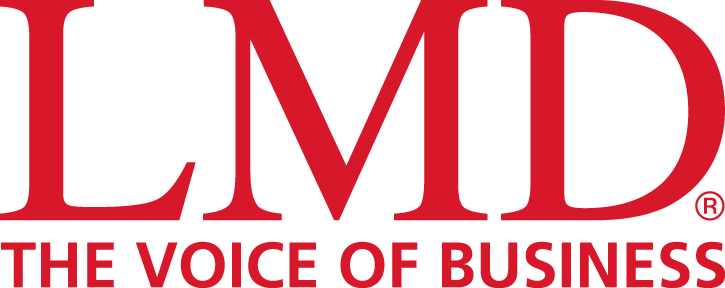ASSESSMENT METHODOLOGY
Great Place To Work® Inc. is a pioneer that has been studying and recognising Best WorkplacesTM around the world for more than 30 years. It is located in over 90 countries and assesses organisations across 170 territories.
The Sri Lankan study is based on the global model and a rigorous methodology – it has been researched, evaluated and conducted in similar studies around the world.
This model applies across all geographies as it primarily measures the hygiene factors in the work environment, which are considered the requisite foundation of a Great Place To Work For All™. In turn, being a Great Place To Work For All is the basis for being selected as a best workplace.
Eighty-five percent of the Great Place To Work For All evaluation is based on the experience of trust and employees reaching their full human potential as part of their organisation, no matter who they are or what they do. These experiences are analysed in relation to each organisation’s size, workforce demographics and industry norms.
The remaining 15 percent of the evaluation is based on all employees’ daily experiences of innovation, the organisation’s values and the effectiveness of its leaders in ensuring they are consistently experienced.
THE FIRST STEP
The first step to being recognised as a great workplace is to voluntarily undertake a paid assessment with a view of measuring, being certified and opting to participate in the ‘Best Workplaces’ studies during the year of active certification.
While all organisations undertaking the Great Place To Work assessment can be certified for up to one year upon meeting global standards, participants who submit their information to the Best Workplaces study will additionally be considered for inclusion in the lists of the ‘Best Workplaces in Sri Lanka’ and ‘Best Workplaces in Asia’ each year.
To qualify for the national Best Workplaces study, an organisation must have 20 or more employees and be a registered entity in Sri Lanka.
TWO LENS MODEL
The Great Place To Work Model considers workplace culture from two perspectives: the employee perspective – whereby the employees’ perceptions of the workplace experience are averaged using the Trust IndexTM survey; and the manager’s perspective –
whereby the quality of interactions intended through people practices established by the management is evaluated using the Culture AuditTM tool.
EMPLOYEE EXPERIENCE
A unique employee centric framework is used to measure employee perceptions through the Trust Index survey – a proprietary employee feedback tool developed by Great Place To Work.
Comprising 59 statements and using a five point Likert scale, the universal instrument measures employee experience and counts for 75 percent of an organisation’s score. A majority of the weightage is allocated to the actual experiences of employees, and gives them the power to validate or invalidate their organisations for this exclusive recognition.
The survey is available in all three local languages and administered in multiple modes – i.e. email, paper or kiosk, depending on the organisation’s requirements.
Through two open-ended questions, the tool also captures employees’ comments about what makes their workplace great and what would make it better. And it encourages employees to submit their opinions and suggestions through anonymous responses.
A robust procedure has been put in place to protect individual anonymity and the confidentiality of individual responses throughout the survey process. This will promote and enable honest and real feedback from employees.
PARTICIPATION
To be considered, organisations must meet the Great Place To Work CertifiedTM standard of minimum 70 percent positive employee sentiment and have an active certification (awarded for a maximum of one year) at the time of selection.
To ensure that survey results truly represent all employees, it is required that they be accurate to a 95 percent confidence level with a maximum five percent margin for error. For organisations that employ less than 5,000 people, all employees are selected to participate in the survey by default while larger organisations are assessed based on a random stratified sampling method.
EVALUATION
A strict methodology for maintaining anonymity is followed so that individual responses can’t be tracked by organisations that are participating in the survey.
A stringent audit process is implemented during and after completion of the survey to validate high scores. This provides employees with an opportunity to provide candid feedback on the organisation to maintain the assessment’s credibility.
MANAGER’S VIEW
The manager’s perspectives and practices established by management are measured by a proprietary tool and evaluation framework called the Culture Audit.
This is a comprehensive framework around which the organisation submits detailed information on the practices it has adopted to create a Great Place To Work For All. This submission is subject to rigorous evaluation by Great Place To Work trained evaluators.
The Culture Audit contributes to 25 percent of the overall score of an organisation. This instrument helps gauge not only an organisation’s structure and demographics, but also its philosophy and values – and how they are integrated into its people practices.
SIZE CATEGORISATIONS
Organisations were selected for the list of the 40 Best WorkplacesTM in Sri Lanka based on size categories.
This year, workplaces with 20-100 employees were considered in selecting the best 10 in the Micro category. Workplaces with 101-250 employees contributed to the best 10 in the Small category and workplaces with 251-500 employees contributed to the Best eight in the Medium category. Workplaces with over 500 employees were considered for best 12 in the Large category.
Organisations were ranked within the size categories on the list.
POST ASSESSMENT IMPROVEMENTS
To improve organisational culture following an assessment, the two lens model can relate employee feedback to identify practices that may not be effective.
This can be further studied through qualitative methods such as understanding root causes for priority areas using focus group discussions with employees as well as an onsite Culture Audit – a methodology comprising a series of discussions with employees, people managers and practice owners/HR, to understand the implementation and effectiveness of practices submitted.
Coupled with survey data, this can be used for action planning by the management team to improve perceptions and/or people practices in the organisation to create a better employee experience.
This ranking was finalised based on surveys conducted from April 2024 to March 2025.

















